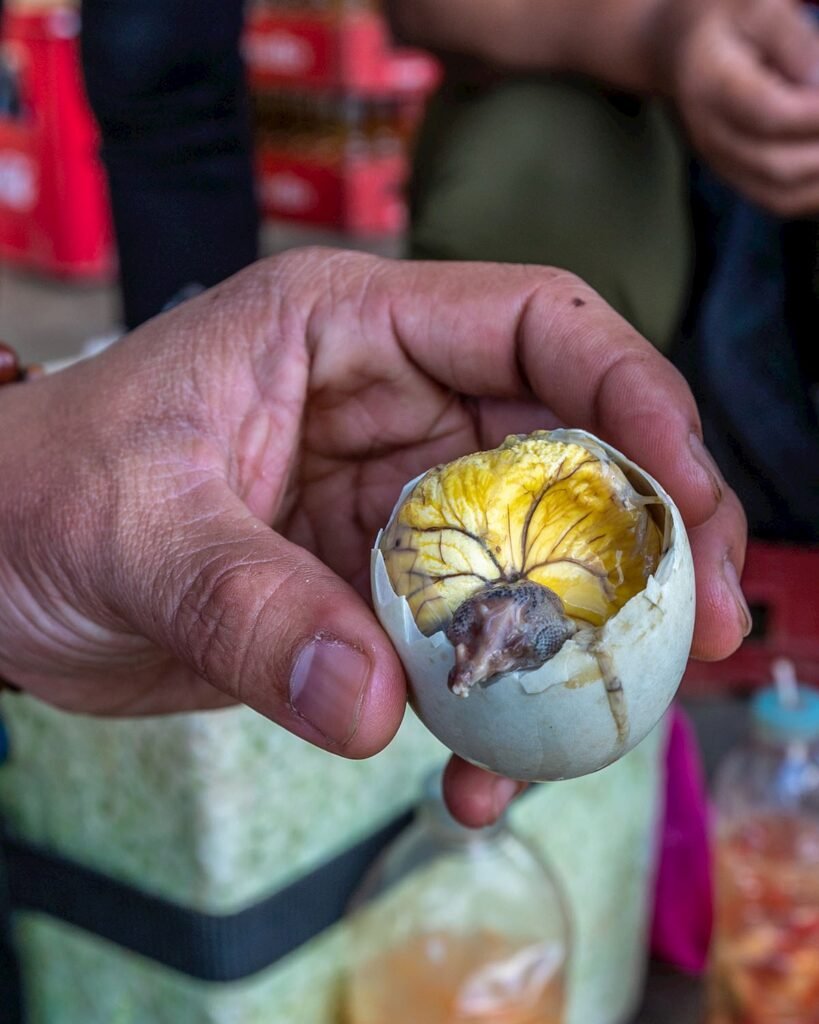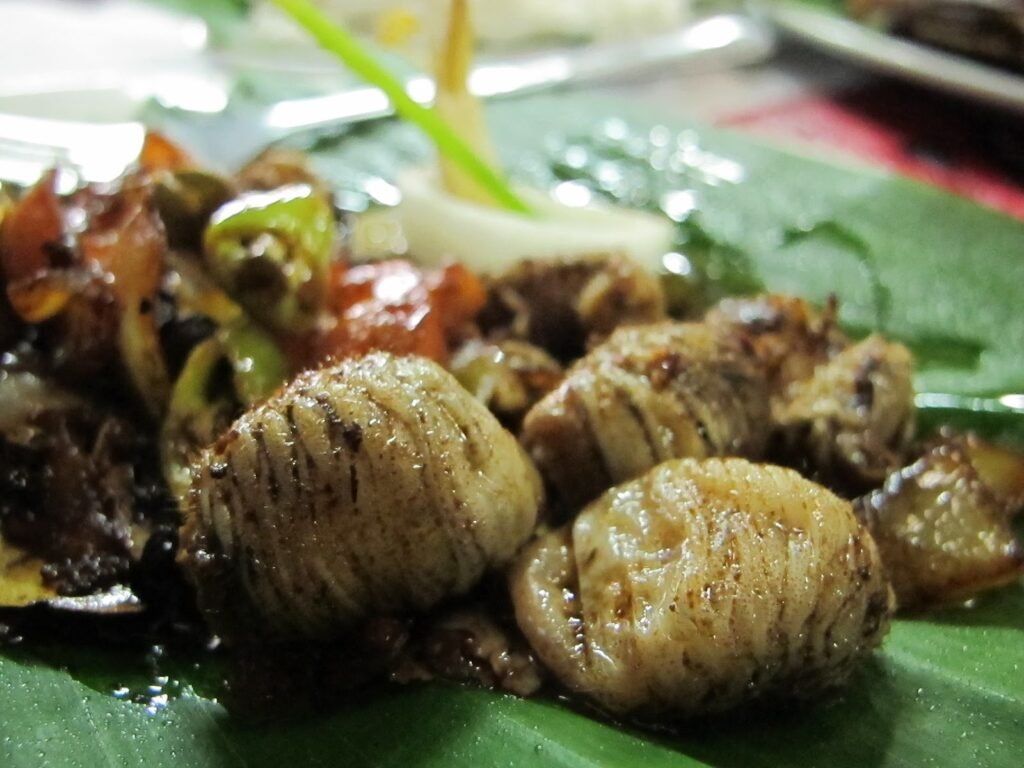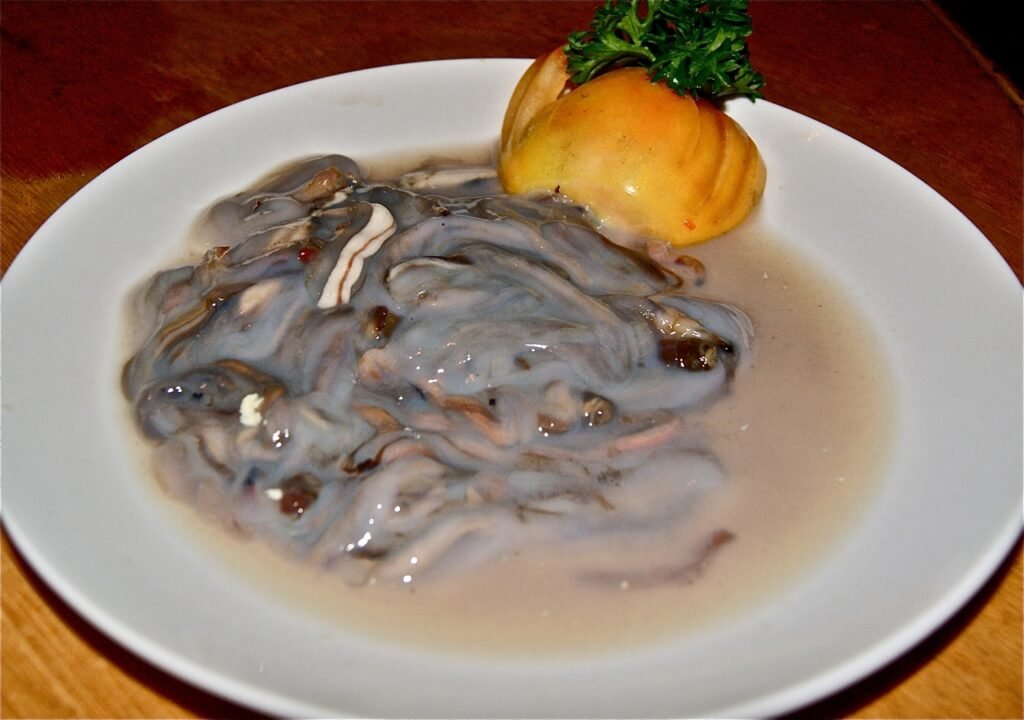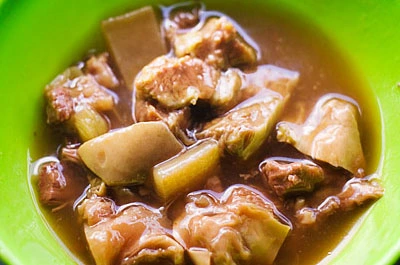When it comes to exploring exotic food, the Philippines is a treasure trove of unique flavors and culinary delights. From bustling street markets to local eateries, the country offers a diverse range of exotic foods that are sure to tantalize your taste buds.
1. Balut: A popular street food in the Philippines, Balut is a fertilized duck embryo that is boiled and eaten from the shell. It may seem intimidating at first, but many locals and adventurous foodies swear by its rich flavor and unique texture.
Balut, a street meal popular in the Philippines and other Southeast Asian nations like Vietnam, is made from a growing duck embryo that has been fertilized for 14 to 21 days. After being boiled, the duck eggs are consumed straight out of their shells with salt and/or a dipping sauce consisting of vinegar, garlic, and bird’s eye chile.

2. Adobong Uok: Hailing from Mindanao, Adobong Uok is a dish made from coconut tree worms cooked in vinegar, soy sauce, garlic, and spices. Despite its unusual main ingredient, this dish is known for its savory taste and crunchy texture.
The larvae of the coconut rhinoceros beetle, known locally as uok, are found inside dead coconut logs. Like the Indians in the jungle, you can eat this fat, creepy worm raw. Despite looking like worms, this unsettling creature tastes best when prepared in the “Adobong Uok” adobo style. It is quite delicious and enticing. In certain parts of the Philippines, this unusual food is highly well-liked.

3. Tamilok: Found in the waters of Palawan, Tamilok is a type of woodworm that is often eaten raw with calamansi juice or vinegar. It boasts a subtle briny flavor that seafood lovers will appreciate.
You may be confident that all the mold and maggots have been removed, so when the etag is delivered to you, it won’t seem strange. It can be made into omelets, and sausages, or cooked and eaten as a viand with rice, much like any other sort of cured beef.

4. Soup No. 5: This hearty soup originating from Luzon contains bull’s testicles and penis as its main ingredients. Considered an aphrodisiac by some locals, Soup No. 5 is believed to have various health benefits.
Although Soup Number Five isn’t as popular in Manila, Balaw-Balaw is one restaurant that I am aware of that serves it. This long-standing Angono restaurant is well-known for its unusual Filipino fare, which includes tapang usa (cured deer), tapang baboy damo (cured wild boar), and adobong kamaru.

5. Sinuglaw: A fusion dish popular in the Visayas region, Sinuglaw combines grilled pork belly or fish with kinilaw (ceviche). The contrasting flavors of smoky grilled meat and tangy marinated seafood create a harmonious blend that delights the palate.
Fish ceviche and grilled hog belly make up the meal known as sinuglaw. This can be served as an appetizer or as the main course. The terms “sinuglaw” and “kinilaw,” which refer to grilling and soaking in vinegar or citric acid, respectively, are the names of two well-known culinary techniques used in the Visayas and Mindanao regions.

Exploring these exotic foods in the Philippines offers not only a culinary adventure but also an opportunity to immerse yourself in the rich tapestry of Filipino culture and traditions through their unique gastronomic offerings.

